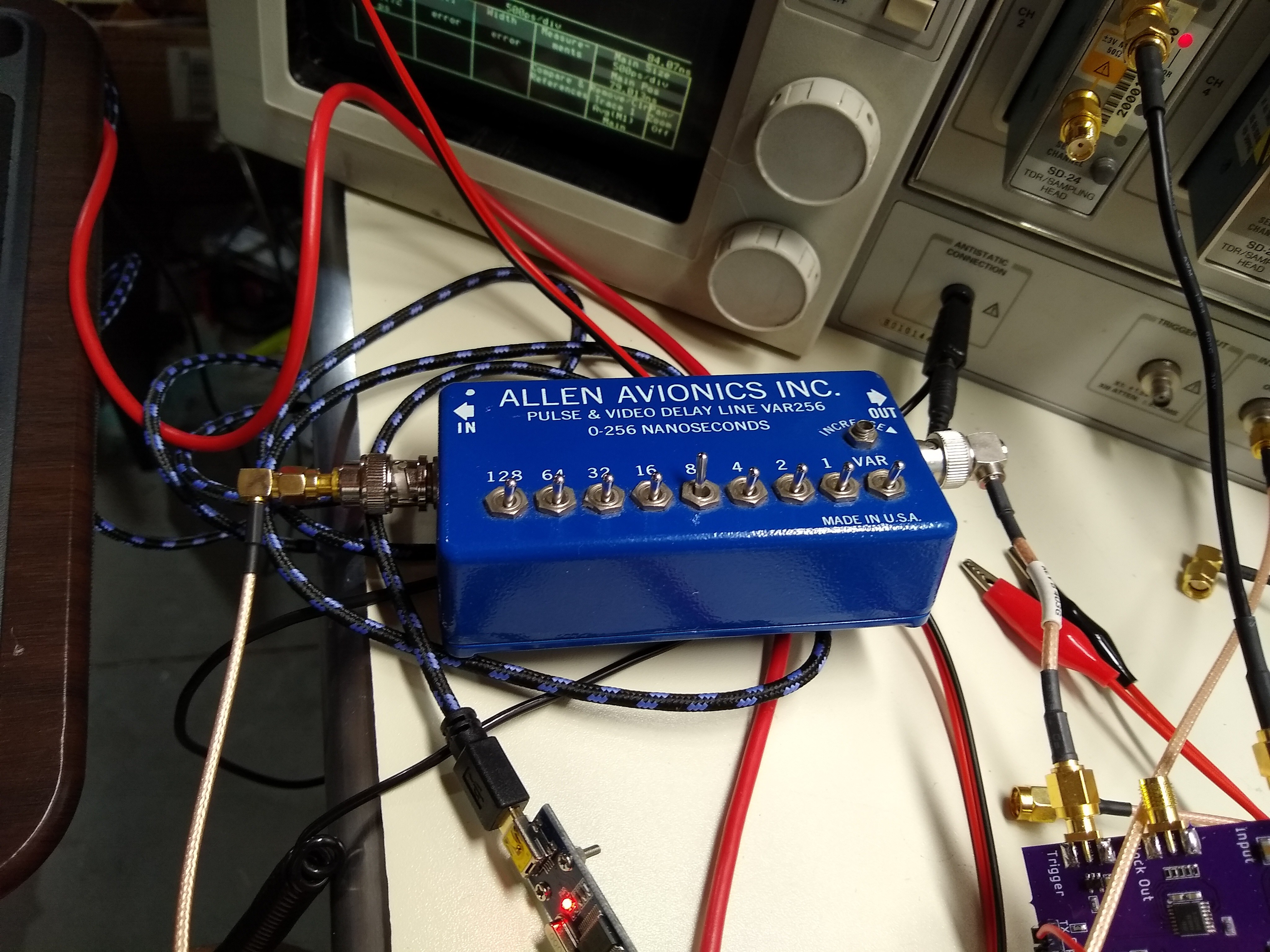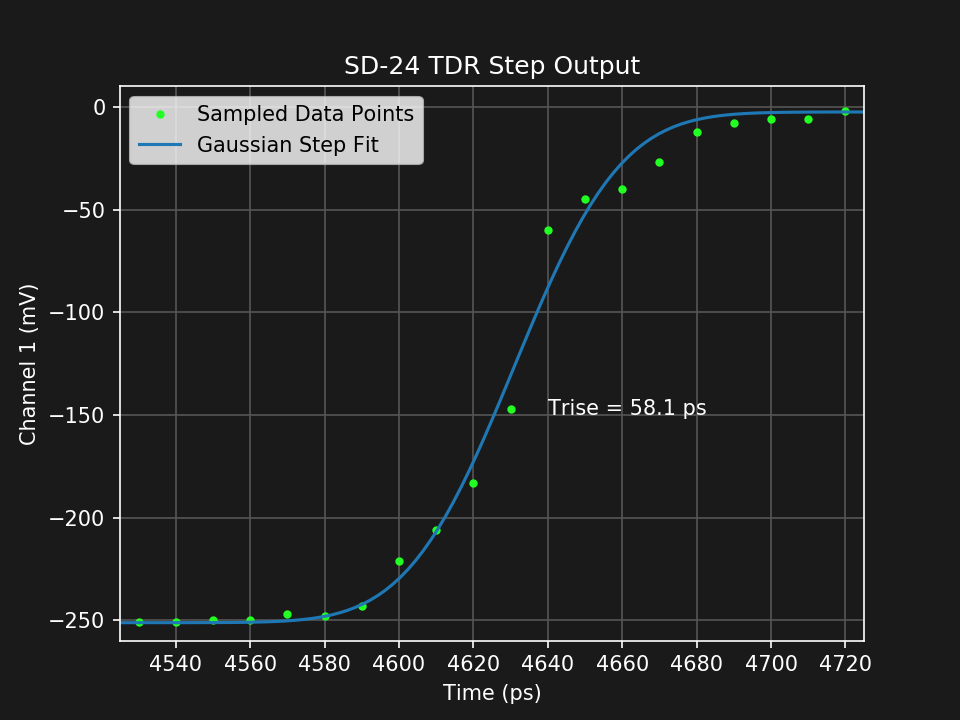It took a little doing, but I was able to measure the bandwidth of the prototype sampler using the TDR step generator built in to the Tektronix SD-24 head. I had to drag out an old Allen Avionics switchable delay line to get the triggering right.

This was also the first test of external triggering for the sampler. It worked :-)
The delay line has a very low bandwidth, and even though it's only delaying the trigger pulses here, it can cause problems by slowing the trigger edge resulting in timing jitter. I haven't determined how much of an effect this actually has on the measurement yet, but it can only result in an artificially low bandwidth estimate, so it's OK for now. I really should just cut a piece of low-loss coax to the right length (which appears to be 8 ns) and use that as a delay. Maybe later.
The Tek scope measures the rise time of the TDR pulse as 30 ps:

This is at the end of a short section of RG-174 cable, which is lousy for this kind of work, but is flexible enough to connect between two inputs on the same SD-24 head. The rise time of the step measured internally to the head is 24 ps.
Using the same trick as before, namely, fitting a Gaussian step function to the prototype sampler response, I come up with a measurement of 58.1 ps.

Again, using the same logic as before, and correcting for the step response of the SD-24 head, the actual step is probably close to sqrt(30^2 - 17^2) = 25 ps.
Using this to estimate the response of the prototype, we get Trise = sqrt(58.1^2 - 25^2) = 52.4 ps.
A scope with a Gaussian response and a rise time of 52.4 ps has a bandwidth of 6.7 GHz.
What did I estimate the first time? (checks notes) oh, yeah, 6.4 GHz. Pretty close.
I'm calling it 6 for now.
I might be able to get some better measurements by averaging more in the sampling process. It might be worth some experiments, but without an accurately calibrated timebase, it probably wouldn't mean all that much.
 Ted Yapo
Ted Yapo
Discussions
Become a Hackaday.io Member
Create an account to leave a comment. Already have an account? Log In.